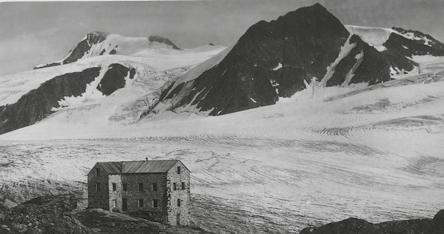
2 minute read
Cime scure Goodbye Glaciers
I GHIACCIAI SONO VIVI. SI MUOVONO, SI ROMPONO, SCORRONO, TRAVOLGONO E SI SCHIANTANO, SCOPPIANO E SI LAMENTANO. SONO SEMPRE STATI UN MONDO TUTTO PARTICOLARE: RUDE, PERICOLOSO E OSTILE ALLA VITA. ORA, PERÒ, SONO I GHIACCIAI STESSI CHE STANNO MORENDO.
Indipendentemente dal comportamento dell’uomo, metà della massa glaciale delle Alpi scomparirà entro il 2050. I ghiacciai non sono mai stati delle entità im mobili e immutabili: sono cambiati in ogni epoca, sono cresciuti, si sono ridotti, si sono ripresi. Ma da qualche decennio, ormai, questo ciclo è stato interrotto: nes sun ghiacciaio cresce più, perdono anzi la loro massa ad un ritmo allarmante.

Le estati calde e gli inverni spesso senza neve colpi scono anche i ghiacciai altoatesini, particolarmente sensibili a causa della loro posizione isolata e delle loro piccole dimensioni (a volte meno di 1 km²). Se condo gli attuali calcoli del Centro Ricerche Eurac di Bolzano, nel giro di pochi decenni i ghiacciai altoatesini si ritireranno ad un’altitudine di oltre 3.000 m e molti scompariranno completamente.
L’ampia Valle dell’Adige e le valli laterali ricordano come le massicce masse di ghiaccio dell’era glaciale abbiano lasciato sull’Alto Adige le loro tracce. Che strano che qualcosa di così potente si dimostri oggi così fragile.
GLACIERS ARE ALIVE. THEY MOVE, THEY BREAK, THEY FLOW, THEY GRIND AND CRASH, THEY BURST AND MOAN. THEY HAVE ALWAYS BEEN A WORLD BEYOND: ROUGH, DANGEROUS AND HOSTILE TO LIFE. BUT NOW THE GLACIERS THEMSELVES ARE DYING.
Irrespective of how mankind behaves from now on, half of the glacier mass of the Alps will have disappeared by 2050. The glaciers have never been static, and have changed throughout time. They grew, they shrank, they recovered again. But for some decades now this cycle has been disrupted: no glacier is growing any longer, and instead they are losing mass at an alarming rate.
The hot summers and now often snowless winters also affect the South Tyrolean glaciers, which are particularly susceptible to ice shrinkage due to their isolated position and small size (sometimes less than a square km). According to current calculations of the Eurac Research Centre in Bolzano/Bozen, South Tyrol’s glaciers will retreat to an altitude of over 3,000 m within a few decades, and many will disappear completely.
The wide Etschtal Valley, the wedge-shaped side valleys – they remind us of how large the effects of the glacier currents of the Ice Age were on South Tyrol. How strange that something so powerful is also so fragile in the end.
Lodner (Cima Fiammante) e Hohe Weiße (Cima Bianca Grande) nel Parco Naturale Gruppo di Tessa. Il ghiacciaio si è quasi completamente ritirato. The mountains around Lodner and Hohe Weiße. The former glacier has almost completely retreat.












